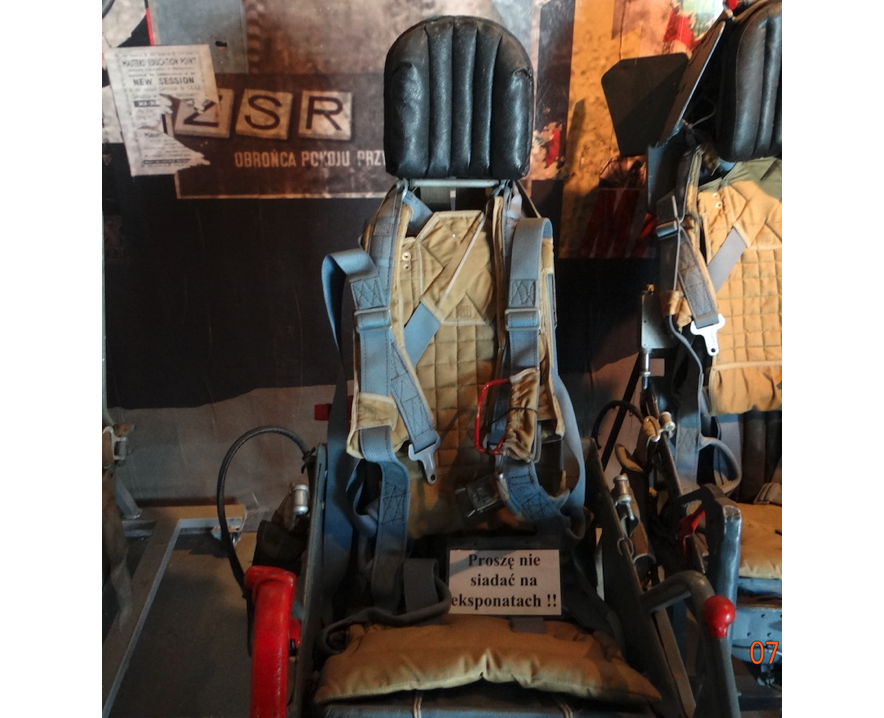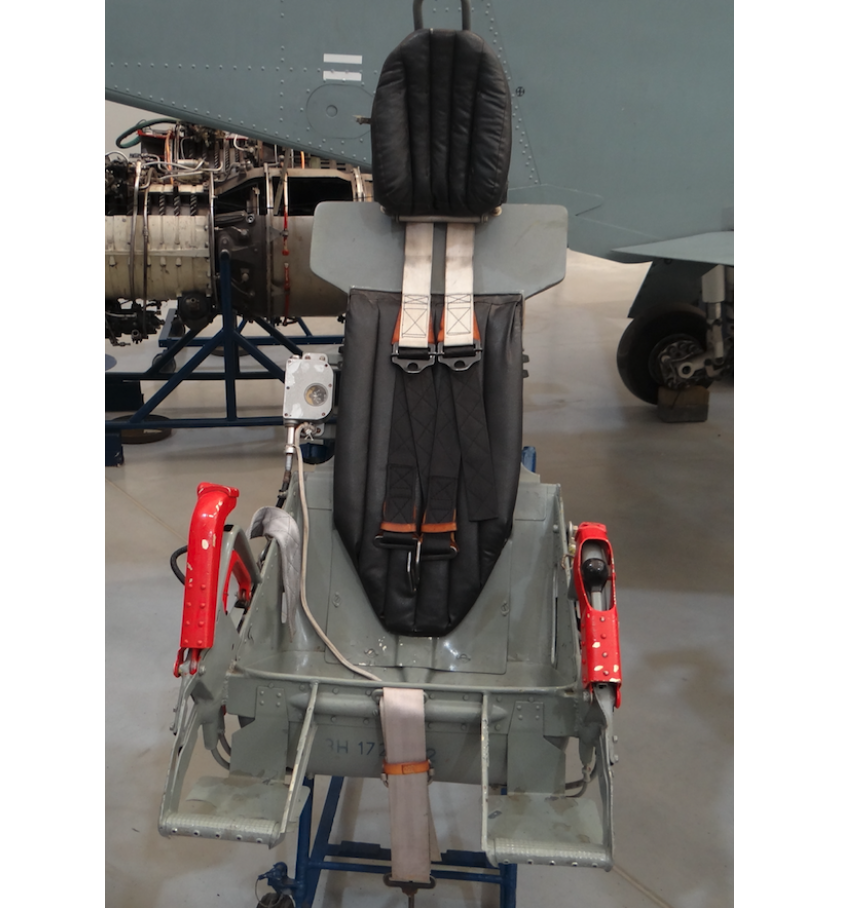Kraków 2017-12-19
Emergency abandonment of a military aircraft.
Part 2.
PZL Lim aircraft rescue system.
After a series of information from Part 1, let's take a look at the rescue of the pilot from the PZL Lim (MiG-15, MiG-17) aircraft, which were used in the Polish Army from 1950 to 1990. All of them were equipped with seats ejected by a pyrotechnic charge and a KAP-3 machine, which initiated the opening of the rescue parachute.
The remote control activates the "Danger" recognition device. If he is in imminent danger, he has the right to broadcast "I am in danger" in plain text.
It is recommended to catapult in a level flight from a height of 600 m, and in a dive flight not lower than 1,000 m. The minimum allowable height for catapulting in level flight is 250 m. This means that there is no guarantee that the test will be successful below this ceiling. In Spark planes (two-seater), the first aviator from the second cabin is catapulted. When the plane is out of control, they both eject as fast as possible.
There was a difference with or without so-called marine rescue equipment. In the first case, the pilot fired with a lever on the armrest. In the second case, using the "face veil". If, however, it was impossible, it would be possible to use the lever on the armrest.
If possible, the remote control should do the following:
- Increase it when flying at a very low altitude.
- When flying in the stratosphere, lower the flight altitude to 4,000 m.
- Reduce speed to 350-400 km / h.
- To turn of the engine.
- Close the oxygen supply valve.
- Do not go into the clouds.
- Go to the uninhabited area.
- When flying over the sea, direct the plane towards the land.
- When flying over hostile terrain, direct the plane towards the border.
- When flying over hostile terrain, destroy the reconnaissance device. (We don't know how it happened). While communicating with "Earth", state the area of catapulting.
In PZL Lim planes, it was possible to leave the plane without the use of a seat over the side of the plane at a level flight and a speed of about 300-350 km / h. The pilot threw down the cabin cover and unfastened the harness lock himself. Alternatively, it was possible to turn the plane over on its back and vigorously release the stick. Then the pilot fell out of the cabin.
KL (flight manager) was required to issue the command to eject in the following situations:
- It is not possible to land at the airport or other designated landing area.
- Failure to take the airplane out of a spin to a ceiling of 3,000 m or to roll it into a spin below that ceiling.
- Unsuccessful attempts to restart the engine to an altitude of 2,000 m. However, here the pilots made attempts below this ceiling. This was due to the fact that the air is denser lower and there is more oxygen, therefore the probability of starting the engine was greater.
- Damage to the control of the airplane to such a degree that it would not be possible to safely land. Unfortunately for the young pilot it was extremely difficult to assess. There was both an underestimate and an overestimation of the situation. Deterioration of weather conditions below the established minima for a given pilot. This was decided by the pilot's training class.
- Fire in the airplane or its extinction, but the machine is not maneuverable. In the Polish Army, unlike the CCCP army, fires were treated very seriously.
- Airborne collision with another plane, balloon or bird with consequences.
- Damage to on-board instruments, preventing safe passage through clouds.
- Loss of spatial orientation and descent below the ceiling of 3,000 m.
- Rapid deterioration of the pilot's health. An emergency landing attempt in unprepared terrain, when, after flying over it twice, the pilot judged that the previously selected area was unsuitable for landing. It concerned the most experienced pilots.

Procedure of leaving the PZL Lim plane with the use of the KK-1 ejection seat:
- Enter where you are.
- To turn of the engine.
- Close the oxygen supply valve.
- Disconnect the radio cables (microphone and headphones).
- Dump the cab canopy.
- Adopt the correct position in the chair (legs on the footrest, back pressed against the backrest, head pressed against the headrest, eyes closed, gasps, clenched teeth, tense muscles).
- Launch of the ejection device.
- After leaving the plane, vigorously straighten your legs or push the chair back with your hands.
- You could open the parachute yourself by tugging on the release handle.
- The parachute could also be opened by the KAP-3 parachute machine set to the appropriate height. The parachute opens a clock or aneroid (metal barometer) mechanism. The aneroid mechanism, operating on the basis of the pressure difference, at different altitudes, allows the automatic opening of the parachute within the height of 500-4000 m.

Description of the photo: On the left side of the KK-2 seat backrest, the KAP-3 automatic unit releasing the rescue parachute is visible. The number 3H 17 ... i.e. PZL Lim-5 is visible on the armchair bowl.
Written by Karol Placha Hetman
